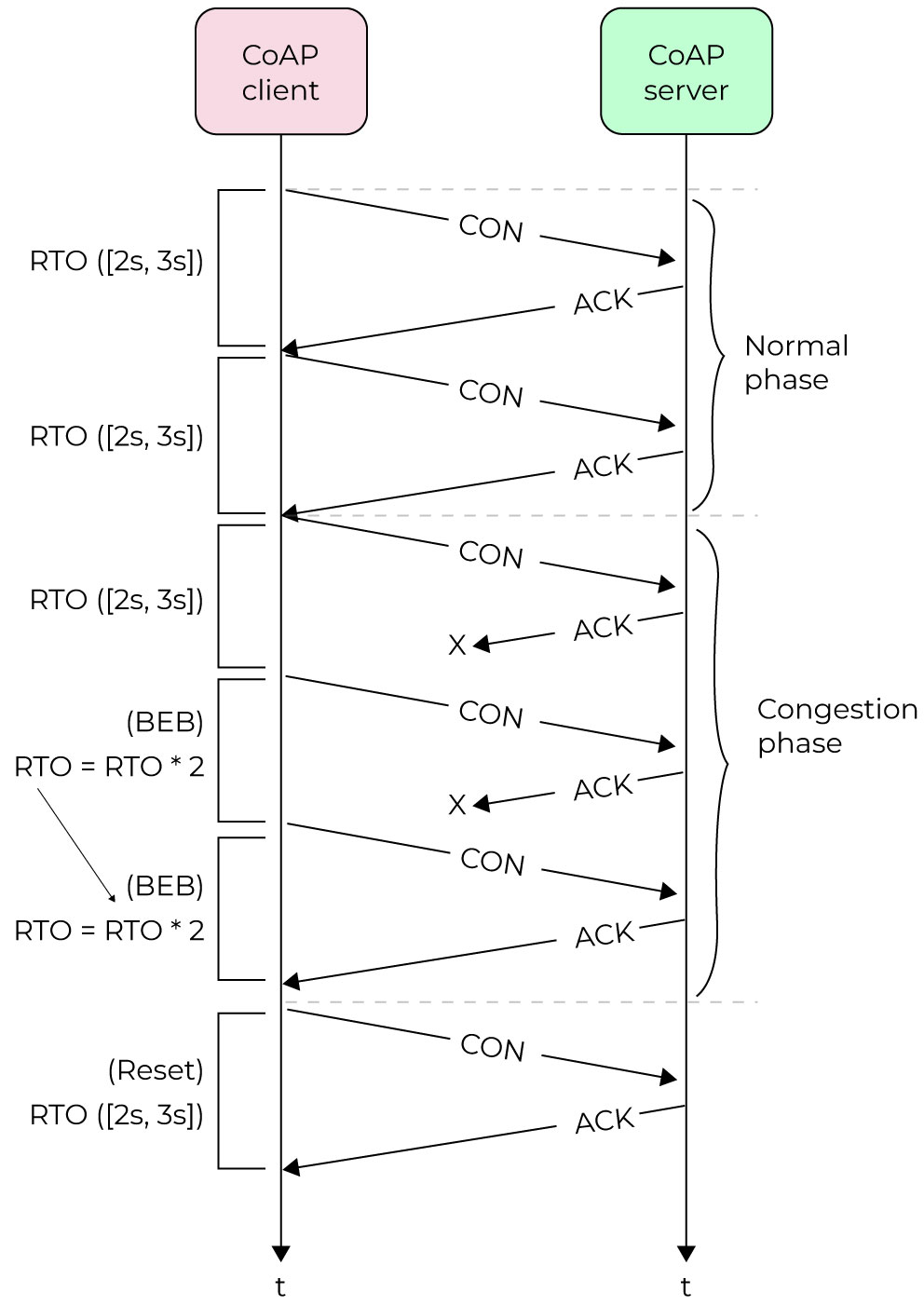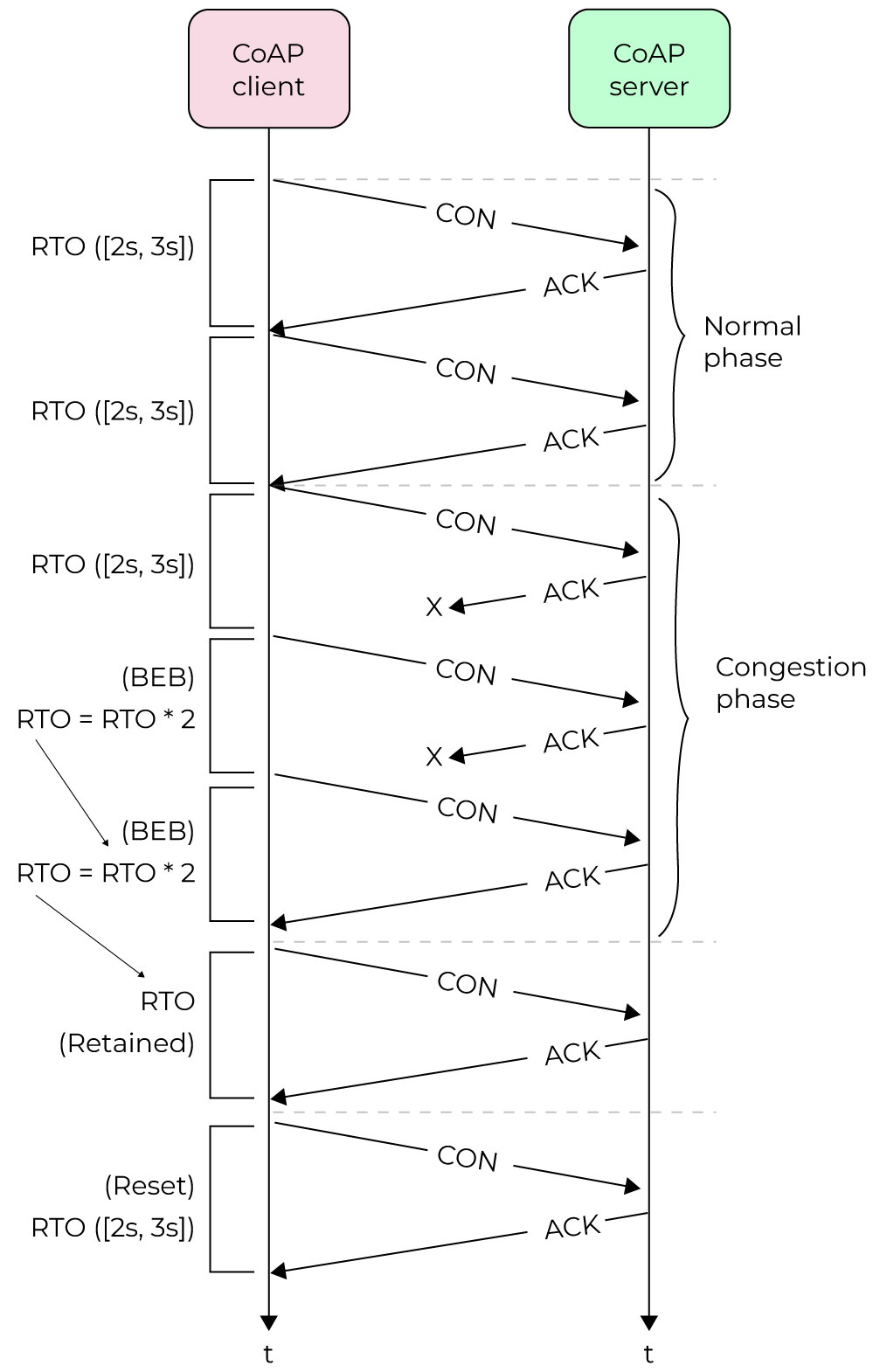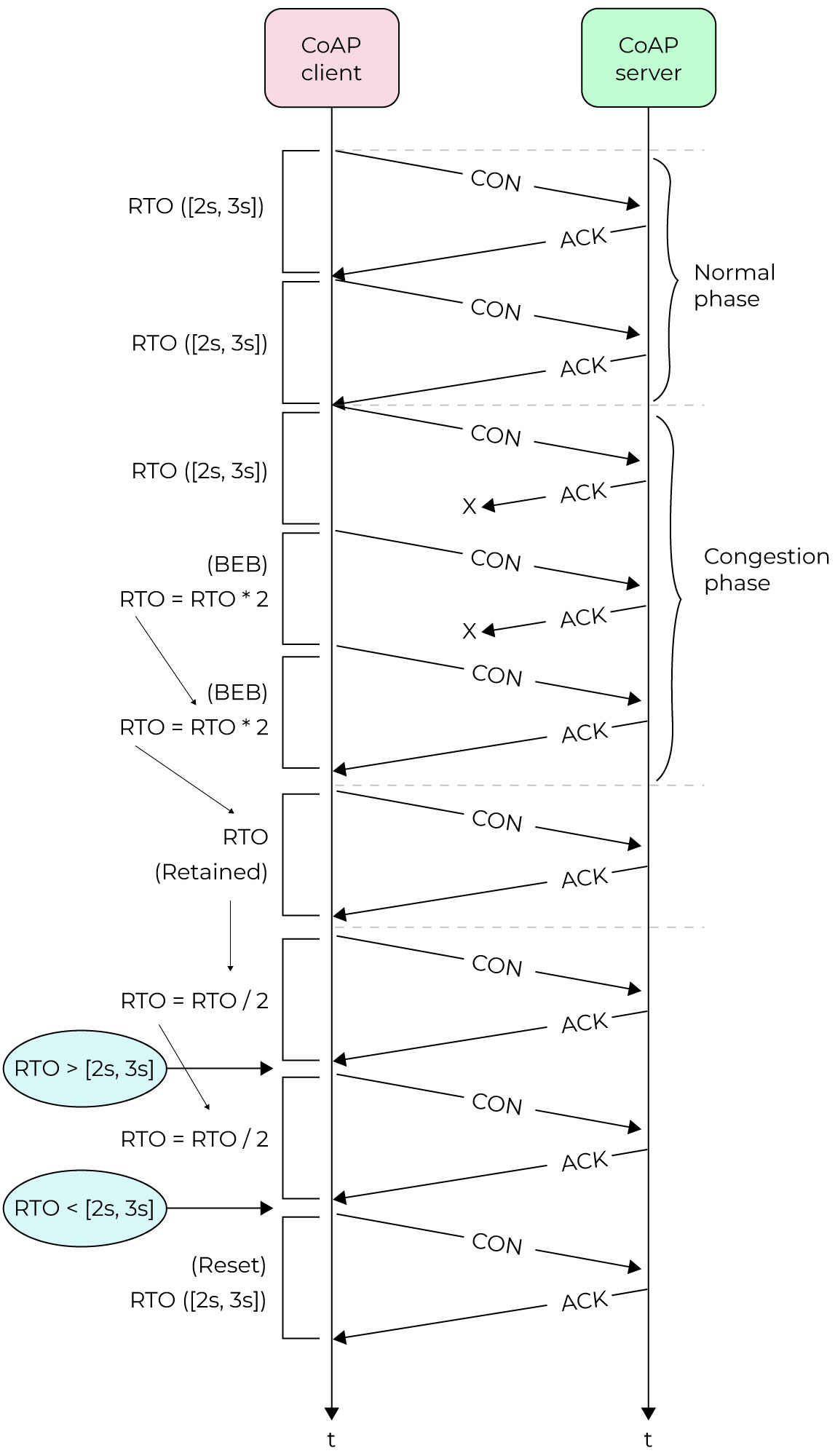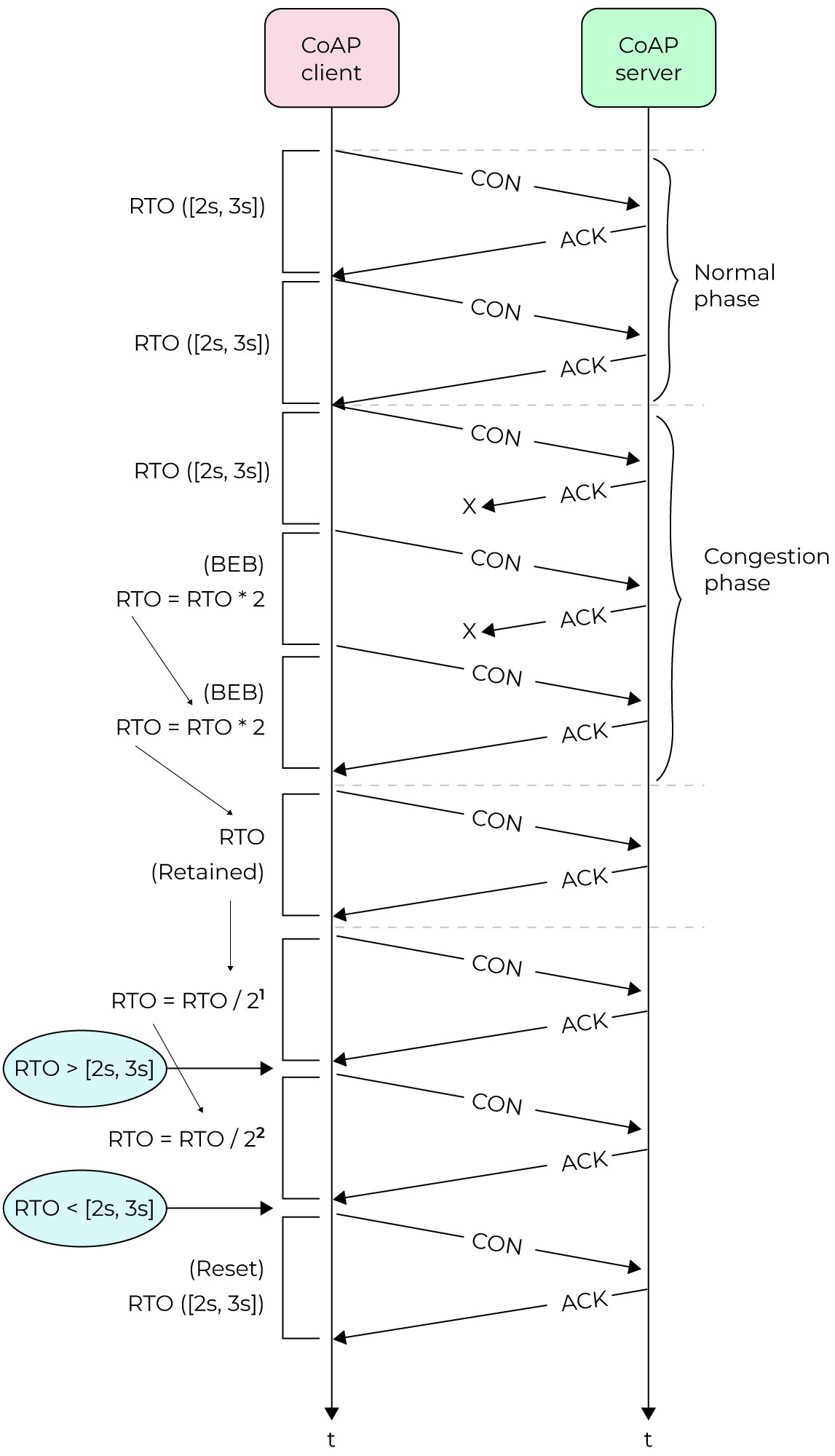Introduction
In this work, we propose a Geometric Sequence Technique (GST) for effective RTO estimation in CoAP. CoAP uses a fixed RTO value with BEB in case of retransmissions. Two new techniques, namely Fullbackoff1 variant and Fullbackoff2 variant are proposed to improve the RTO estimation in CoAP. These techniques do not use RTT measurements; hence, the working of original CoAP algorithm remains largely unaffected. Unlike CoAP, both variants avoid resetting the RTO immediately after receiving an ACK for the retransmitted packet. GST is a simple enhancement to the Fullbackoff2 variant. GST retains the previous RTO value after having received the ACK for the retransmitted packet and eventually returns to the default value by decreasing the RTO depending on the number of consecutive successf-->ul transmissions. Our work shows that GST minimizes the Flow Completion Times (FCT), reduces the number retransmissions and improves the network throughput.
-

Working of CoAP -

Working of Fullbackoff1 variant -

Working of Fullbackoff2 variant -

Working of GST for RTO estimation in CoAP
Steps to Reproduce the results
- Clone the repository : Link
- Compile the Contiki with "sudo ant jar" or "ant jar"
- Run the Cooja with "sudo ant run" or "ant run"
- GST can now be built and run on FIT/IoT Lab.
Future Work
- Evaluate GST against a variety of real-time IoT flows, such as the bursty traffic.
- Consider other evaluation parameters such as energy consumption, etc.
- Check the efficiency of our implementation in IoTivity platform.